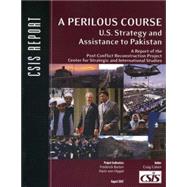- ISBN: 9780892065110 | 0892065117
- Cover: Paperback
- Copyright: 12/21/2007
For U.S. assistance to be effective in a state such as Pakistan, aid must go beyond transactional, quid pro quo deals and address the country's main drivers of conflict, instability, and extremism. Despite more than $10 billion in U.S. assistance since September 11, 2001, distrust, dissatisfaction, and unrealistic expectations continue to undermine the U.S. goal of developing a strong, strategic, and enduring partnership with Pakistan.The main drivers of conflict, instability, and extremism in Pakistan include a culture of impunity and injustice, discontent in the provinces, ethnic and sectarian tensions, a rapidly growing and urbanizing youth population, and extremist views among traditional in-country allies. Militant groups exploit those underlying conditions to recruit followers on the basis of a narrative of shared suffering and injustice and of the state's failure to provide stability or prosperity.The vast majority of U.S. assistance to Pakistan since September 11, 2001, however, has not been directed to the nation's underlying fault lines, but to specific, short-term counterterrorism objectives that focus particularly on the western border and on Afghanistan. Though the threat from al Qaeda and the Taliban is real, the United States must be careful not to undermine its broader strategic goals in Pakistan or the region. Americans need to recognize that we are entering a new phase of our relationship with Pakistan that will last 25 years or more. And for U.S. assistance to be effective there, Washington must (a) broaden the partnership between the two countries beyond the "war on terror," (b) better integrate its hard and soft power by devising a strategy aligned with real resources, and (c) become more agile in its aid delivery.






